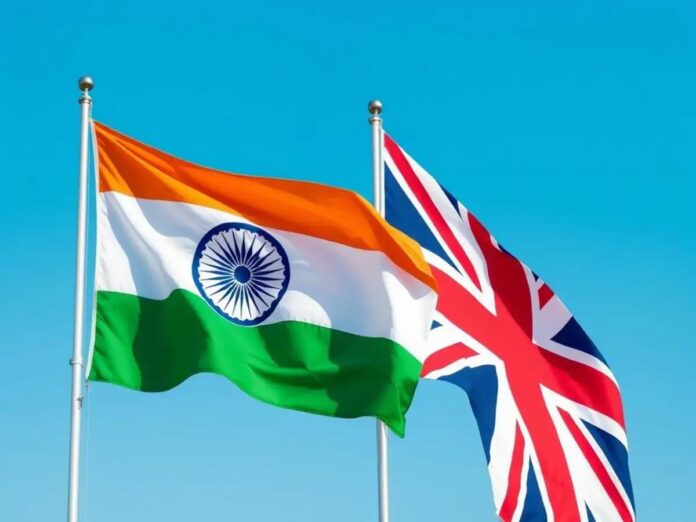Narendra Modi’s Visit to Britain: A New Chapter in India-Britain Defence Cooperation
Today marks the beginning of Indian Prime Minister Narendra Modi’s two-day visit to Britain, a significant event aimed at solidifying the India-Britain Free Trade Agreement (FTA) and enhancing the comprehensive strategic partnership (CSP) between the two nations. Central to these discussions will be the elevation of defence industrial cooperation, a crucial area for both countries as they navigate the complexities of global security.
The Context of the Visit
The backdrop of Modi’s visit is Britain’s June 2025 Strategic Defence Review, which emphasizes a "Nato First" approach while acknowledging the importance of partnerships beyond the North Atlantic. The current Keir Starmer government is keen on continuing to develop the bilateral defence relationship, as highlighted in the June National Security Strategy. This document underscores India’s growing significance in the international arena, framing it as a country with which the UK seeks a genuine strategic partnership.
Defence Industrial Cooperation: A Focus Area
One of the most pressing topics on the agenda will be the enhancement of bilateral defence cooperation through investments. This includes the delivery of high-velocity STARStreak very short-range air defence missiles and the establishment of an advanced short-range air-to-air missile (ASRAAM) assembly and testing facility in Hyderabad. Despite these advancements, India currently sources only 3% of its arms and equipment from Britain, a stark contrast to its relationships with other nations.
The last major sale from Britain to India occurred 15 years ago, involving the second tranche of Hawk advanced jet trainers. Since then, India has diversified its defence procurement, acquiring advanced systems from countries like France, the United States, Russia, and Israel. This shift highlights the need for Britain to adapt its approach to remain competitive in the Indian defence market.
Opportunities for Growth
To boost India-UK defence industrial cooperation, several changes are necessary. A bilateral government-to-government (G2G) agreement, which India favors, has yet to be embraced by Britain. Recent acquisitions of French Rafale jets, American M777 howitzers, and Russian S-400 missile systems illustrate India’s preference for direct imports that align with its "Atmanirbhar Bharat" (self-reliant India) initiative.
Countries like France and Russia have successfully localized production within India, creating joint ventures that allow for technology transfers and co-development. For instance, France’s Naval Group has built Scorpene submarines in India, while Russia’s United Aircraft Corporation has established a production line for Sukhoi Su-30 MKI fighter jets. These partnerships have positioned these nations as top strategic defence partners for India, a status that British firms have yet to achieve.
The Challenge of Perception
British defence companies often view India as a "high risk" market, which has hindered their willingness to engage deeply. The local Defence Acquisition Policy (DAP) 2020 heavily favors procurement from Indian firms, creating challenges for foreign original equipment manufacturers (OEMs). Issues such as restricted foreign direct investment (FDI), high indigenous content requirements, and stringent intellectual property regulations complicate the landscape for British firms.
However, there are signs of progress. Sweden’s Saab recently received approval for 100% FDI to manufacture the Carl-Gustaf M4 weapon system in India, setting a precedent that could encourage further foreign investment. The future of India-Britain defence collaboration may lie in smaller, innovative companies that can navigate these complexities.
A Strategic Partnership Beyond Markets
British defence firms should begin to view India not merely as a market but as a strategic partner in global supply and talent chains. Lockheed Martin’s plans to establish a maintenance, repair, and overhaul (MRO) facility for C-130J transport aircraft operated by the Indian Air Force exemplify this shift. Similarly, France’s Dassault has announced plans for an MRO and has partnered with Tata to produce Rafale fuselages in India, positioning itself favorably for future contracts.
The Road Ahead
Britain has unique collaboration opportunities that could differentiate it from other nations. The recent announcement allowing foreign defence OEMs to participate in India’s fifth-generation Advanced Medium Combat Aircraft (AMCA) program could be a game-changer. However, the success of this partnership will depend on deepening mutual trust between the two governments and balancing India’s self-reliance goals with Britain’s business interests.
As Modi’s visit unfolds, the potential for a strengthened India-Britain defence relationship is palpable. With both nations recognizing the importance of collaboration in an increasingly complex global landscape, this visit could mark the beginning of a new chapter in their strategic partnership.

